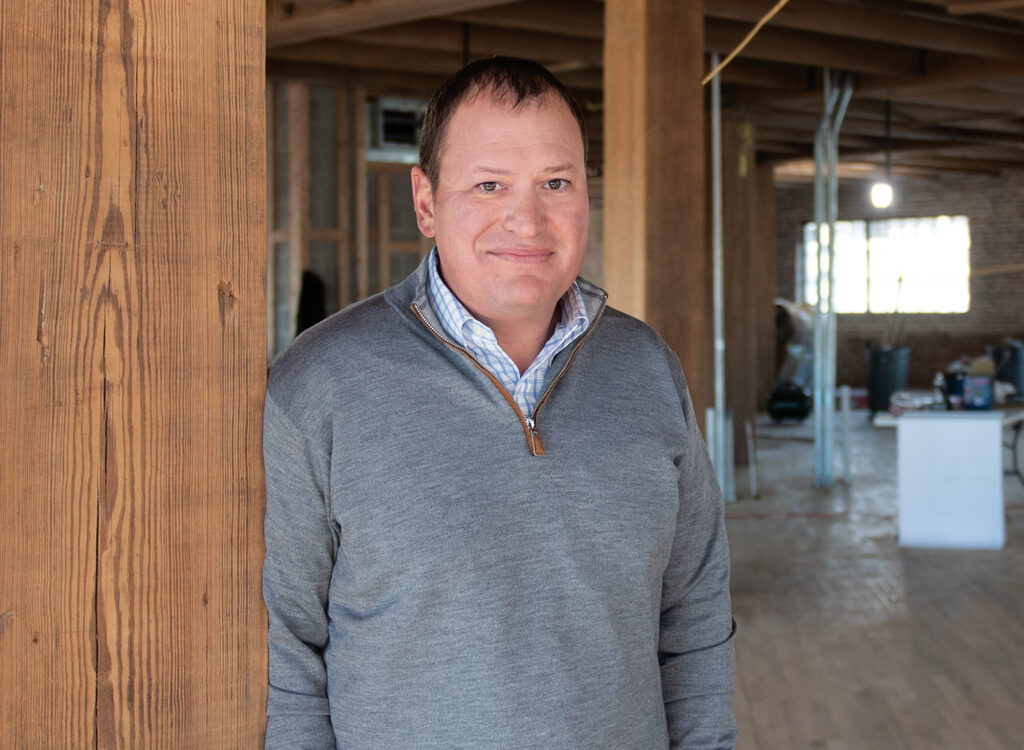Managing growth
City of Ankeny navigates expansion as it sets its sights on 2040

Ankeny’s population has more than doubled since 2000. With more than 72,000 residents in 2022, it’s among the fastest-growing cities not only in Iowa but in the country.
If that rate of growth continues, Ankeny’s population is projected to top 140,000 by 2040. That has the city and developers looking at how to strategically manage that growth to meet the needs of not only residents but the expanding commercial and industrial base. Part of that strategy includes using annexation to expand the city’s borders.

“The hard part about growth and annexation is weighing the balance between property owners who have the right to develop their ground versus property owners who bought their little piece of heaven and don’t have any development around them,” said Eric Jensen, the city’s community development director. “That’s hard.”
To better understand what that looks like, one has to look at a map that shows the city’s current boundaries and a map of the city’s comprehensive land use plan, which outlines where and what kinds of growth could occur. The plan, dubbed “The Ankeny Plan 2024,” was adopted in 2018. It has been amended several times since then as areas of land have been developed.
Jensen said the city doesn’t pursue annexation by knocking on doors and asking people to join the city. Rather, the process starts when a property owner approaches the city expressing interest because they want city services, such as water and sewer, he said.
The amount of land the city has annexed is cyclical and varies from year to year depending on what requests it receives and plans developers present, Jensen said.
Once a request clears the city’s hurdles, it could go to the state’s city development board, an arm of the Iowa Economic Development Authority, for final approval.
The numbers
Between 2003 and 2006, the city annexed about 6,700 acres.
“In 2003 the city adopted a new comprehensive plan,” Jensen said. “Ankeny started to see a lot of growth and began feeling that growth pressure, so we extended further south, further north and west and east, even.”
Those areas included where Ankeny Centennial High School is, along with the surrounding residential development, as well as where the new Costco is located, along with the Deer Creek development.
The city went another 10 years before it annexed another 100 acres, Jensen said.
Approximately 700 acres were annexed in 2016, with only 50 over the next two years. In 2022, petitions to annex almost 800 acres were received, with applications for just a couple hundred acres in 2023.
Jensen said conversations with developers who have large areas of ground indicate thousands of acres could be annexed in 2024, although no applications had been filed at the time of publication.
Looking through a developer’s lens
Leaders in the real estate and development industry like Ashley Johnson, marketing director for DRA Properties, are closely watching the growth. The real estate company was founded by Dennis Albaugh and focuses on projects around Ankeny, his hometown. One of the group’s biggest projects has been the District at Prairie Trail, the popular mixed-use development that has blended residential and commercial in a neighborhood design on the city’s southwest side.
Johnson said the process of choosing an area to expand and develop is a “concerted effort” between the city and developers.
“Our approach all along has been what do we think will benefit the community,” she said. “What impact can we have?”
Because Ankeny is Albaugh’s hometown and others in the company live in Ankeny, the decision on how to develop land is more personal, Johnson said.
“For our growth, we’re going to be a little different in how we approach things,” she said. “Not only considering what the city has put out in its comprehensive plan but where we own ground and what looks to be the next corridor that would be beneficial for our ownership group, the city and that impact on residents.”
Considerations for how land may be used can change over time, such as the new Costco off of 36th Street and what that might mean for development in that area.
Farmland may remain untouched, but as other development happens nearby, it can influence land-use decisions, Johnson said.
One area DRA is developing is south of 36th Street, which will include what she said would be a “flagship community for DRA.”
The development, called Pine Lake Estates, is a 12-acre lake with 300 residential lots. It’s being marketed by Danielle Seifert Real Estate Professionals Group on behalf of DRA, Johnson said.
She said it will be “a crown jewel for DRA and one of the best developments that we’ve done.”
“It’s going to be a beautiful opportunity for residential living,” Johnson said. “That’s what we’re starting over there and working towards seeing what happens with the remainder of the ground as we move forward.”
Johnson said the process of developing a site can vary from developer to developer, but it “all depends on where the ground is, what the processes are and if we have to bring it into the city. That adds some time.”
The rapid pace of Ankeny’s growth has not created any special challenges for DRA, said Johnson, who credited the city of Ankeny for channeling how that growth happens and making decisions that are community focused.
“It’s been exciting to be a part of,” she said.
Limits to growth
Despite its rapid growth, there are areas where Ankeny is restricted from expanding its boundaries, like an agreement with Polk City that draws a line at Iowa Highway 415 and creates a border to the west.
Talks are continuing with Alleman to the north about creating a boundary. No agreement exists with Bondurant or Altoona to the east, Jensen said.
“It’s just really who gets their first,” he said.
To the south and east are unincorporated areas of Polk County. Those areas, although unincorporated, are already developed.

Derek Lord, Ankeny’s director of economic development, said a lot of development is driven by sewer capacity.
“Sewer drives annexation,” he said, “whether it’s capacity or who can serve it.”
There are cost considerations in weighing the benefits of expansion, Lord said.
“We don’t have a magic spreadsheet or formula to weigh the cost of annexation,” he said. “There’s no magic number we’re looking to hit on what the [return on investment] is based on future tax base and expenses, but it’s all part of the discussion to annex or not to annex.”
Jensen said while developers are generally responsible for paying for the majority of street and sewer work, the city’s chief concern is long-term maintenance of that infrastructure, whether that be snow plowing, police or fire protection.
The only real trigger that would cause the city to not consider a request to annex property would be if it is not identified as an area that could be developed on the city’s comprehensive land use plan, Jensen said.
The city cannot also create islands where annexed property surrounds areas that remain outside the city limits. It also avoids irregular borders. While the city has several areas along its southern edge that would be considered irregular, Lord called them “sins of the past” and said the city would not do that today.
What’s next
The city is currently updating zoning regulations as it begins work to update the comprehensive plan, with final adoption of a new plan being two to three years out.
Lord said the comprehensive plan identifies how many acres of future residential and business development are expected and how many more acres of residential property Ankeny can serve.


Graphs contained in the city’s comprehensive land use plan show the breakdown of existing land use within the city limits and the composition of future land use as defined under the plan. Images provided by the City of Ankeny.
Jensen said it equates to a number of residents and jobs a developed area will create and the services needed to accommodate that expansion.
On average, over the past 10 years, the city has platted around 600 acres a year, Lord said.
“Someone is not moving forward with platting unless they’re getting close to developing,” he said. “So you can see why the cycles of annexation are what they are. [When] the developable land inventory runs a little low, we see these waves of annexation.”

Michael Crumb
Michael Crumb is a senior staff writer at Business Record. He covers real estate and development and transportation.









